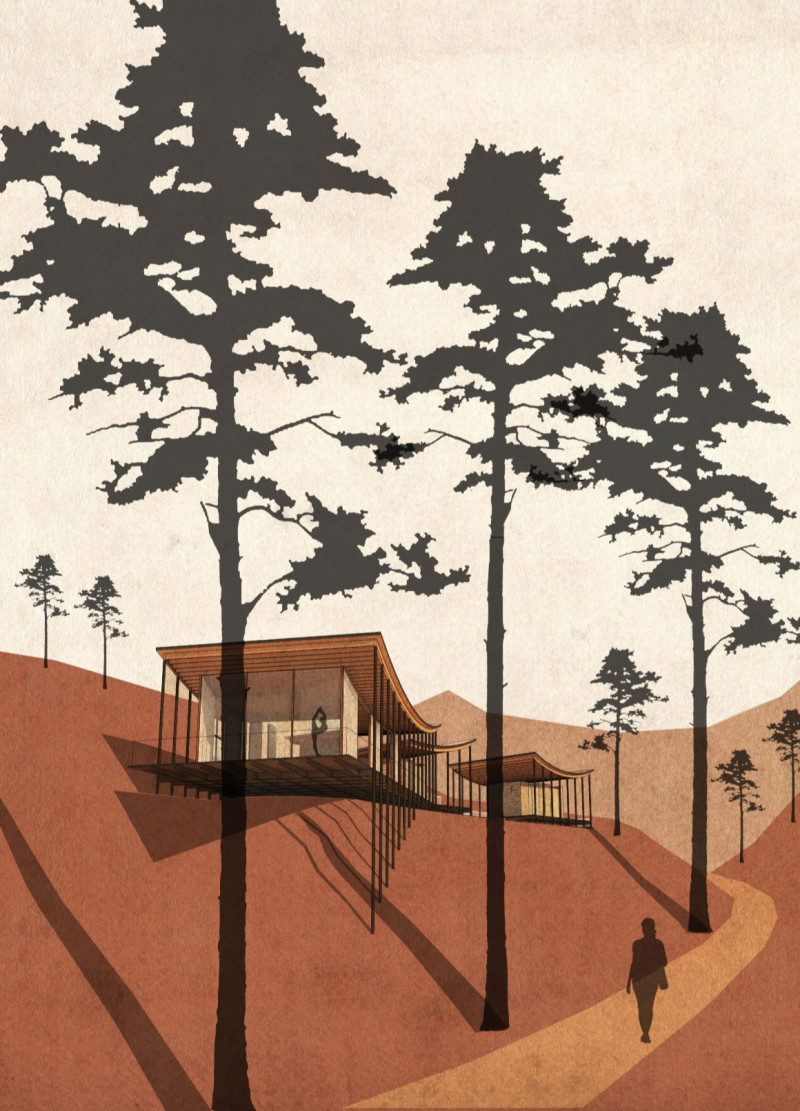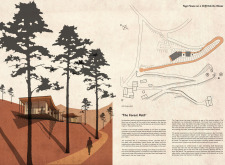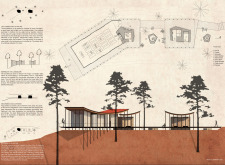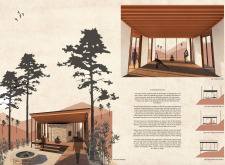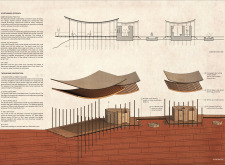5 key facts about this project
The Yoga House in Vale de Moses is located in the forested hills of the Serra da Estrella mountains in central Portugal. Designed as a retreat for individuals seeking rejuvenation through yoga, the structure aims to create a deep connection with nature. The overall design concept focuses on blending the built environment with its natural surroundings, offering a peaceful space for reflection and practice.
Site Integration
The building sits on a west-facing terrace, providing impressive views across the valley. This choice of location enhances the experience of visitors as they make their way from the parking area. A footpath leads up the hillside, establishing a strong connection between the architecture and the landscape.
Spatial Organization
Visitors enter through a passage framed by schist boulders, which guides them into a central courtyard with a calming water feature. This open area serves as a gathering space, encouraging social interaction among guests. The arrangement of spaces promotes both openness and a sense of enclosure and enriches the overall experience.
Yoga Studio Design
The yoga studio, or 'shala,' is a prominent part of the overall design. It is oriented to provide views of the valleys, with large windows allowing natural light to fill the space. This connection with the outdoors is important for creating a pleasant atmosphere for yoga practice. The entrance narrows before expanding into the main area, adding a sense of transition as visitors step into the studio.
Materiality and Sustainability
Local materials are central to the project. Schist is used for the boulders, reflecting the characteristics of the surrounding site and serving functional roles for spaces like toilets and showers. The slender timber columns outline the building's edges and resemble nearby pine trees. A lightweight roof provides shelter without overwhelming the design. Sustainable methods, such as screw pile foundations, limit environmental impact and integrate the structure into the landscape.
The overall environment encourages deep reflection and interaction with nature. The thoughtful connection of indoor and outdoor spaces enhances visitors’ well-being, aligning with the principles of yoga and mindfulness.


